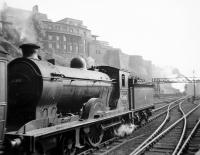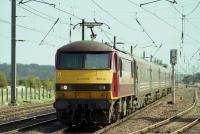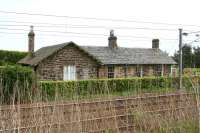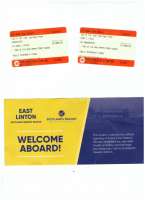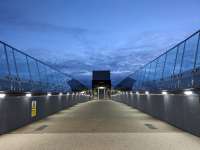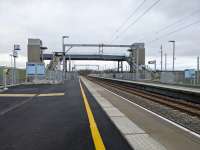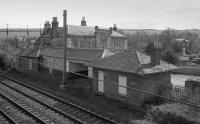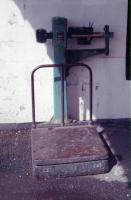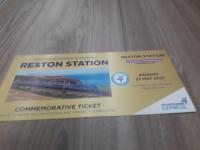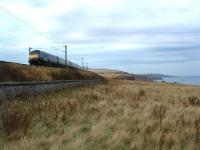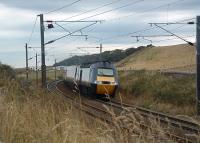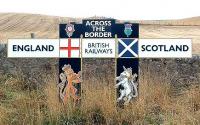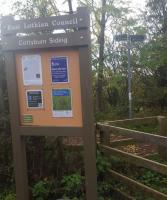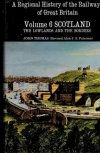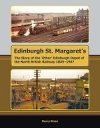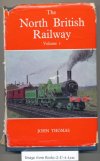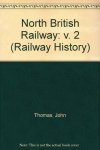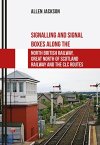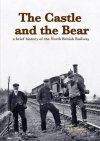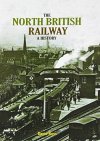North British Railway
Introduction
This line provided a service between Berwick-upon-Tweed and Edinburgh Waverley with a branch to Haddington. Later expansions and acquisitions provided lines to Glasgow Queen Street, Stirling, Dundee, Hamilton [NB] , Peebles, Galashiels, Aberdeen, St Andrews, Carlisle and a large number of other locations. Ultimately this company owned the largest track mileage of any Scottish railway company.
This line was promoted as a separate company by the Edinburgh and Glasgow Railway which did not want to risk the construction of an Edinburgh to Berwick branch. Its construction was encouraged by George Hudson.
The mainline remains open and the Haddington branch is now a footpath.
The line between Edinburgh Waverley, North Berwick and Dunbar is supported and promoted by the East Lothian Community Rail Partnership .
The former North British Railway company is studied and memory preserved by the North British Railway Study Group .
Dates
| / / | Burntisland Docks 17 acres site developed with 2 docks each with 6 coal hoists by the North British Railway. |
| / /1762 | Nor Loch, Edinburgh Drained, this was the future site of North British Railway's Edinburgh Waverley station. |
| 09/03/1837 | Newcastle and Carlisle Railway Branch to the canal basin of the Carlisle and Port Carlisle Canal in Carlisle opened. The terminus later became Canal Yard and was an interchange point with the North British Railway who acquired the Carlisle and Port Carlisle Railway and Dock Company. |
| 07/07/1844 | North British Railway Act receives Royal assent. Alternative date 04/07/1844. |
| / /1845 | Edinburgh and Hawick Railway (North British Railway) Edinburgh and Hawick Railway (as yet unbuilt) absorbed by North British Railway. |
| / /1845 | Marquis of Lothians Waggonway North British Railway Waggonway purchased by the North British Railway. |
| 21/07/1845 | Edinburgh and Dalkeith Railway
North British Railway Edinburgh and Dalkeith Railway merged with the North British Railway. |
| / /1846 | Edinburgh and Dalkeith Railway Fisherrow branch modified to branch off North British Railway. |
| / /1846 | Edinburgh and Dalkeith Railway Original Fisherrow branch from Niddrie connected to North British Railway to form Niddrie to Monktonhall link. |
| / /1846 | North British Railway Robert Thornton appointed the company's first Locomotive Superintendent. |
| 18/06/1846 | North British Railway Opened from Edinburgh to Berwick and the branch from Longniddry to Haddington. Stations opened at Edinburgh, Berwick. Further stations followed around 22 June. |
| 22/06/1846 | North British Railway Tranent, Longniddry, Haddington, Reston [1st] opened. |
| 01/08/1846 | Edinburgh and Glasgow Railway Line extended from Haymarket to meet the North British Railway at North Bridge station. |
| / /1848 | North British Railway Trinity College Church, Edinburgh, pulled down to make room for North Bridge station. |
| 31/12/1850 | Railway Clearing House By this date, Ardrossan Railway, Caledonian Railway, Cockermouth and Workington Railway, Eastern Counties Railway, East Lincolnshire Railway, Fleetwood, Preston and West Riding Junction Railway, Glasgow, Dumfries and Carlisle Railway, Great Northern Railway, Huddersfield and Manchester Railway (London and North Western Railway), Manchester, Sheffield and Lincolnshire Railway, Maryport and Carlisle Railway, North British Railway, Preston and Wyre Railway, Dock and Harbour, Shrewsbury and Chester Railway, South Staffordshire Railway, Stockton and Darlington Railway, Stockton and Hartlepool Railway, St Helens and Runcorn Gap Railway, Stirling and Dunfermline Railway, Whitehaven Junction Railway and York, Newcastle and Berwick Railway join. |
| / /1851 | North British Railway Robert Thornton leaves company. William Smith appointed Locomotive Superintendent. |
| / /1854 | North British Railway William Smith leaves company. Edmund George Petrie appointed Locomotive Superintendent. |
| / /1854 | North British Railway Edmund George Petrie leaves company. |
| / /1855 | North British Railway William Hurst appointed Locomotive Superintendent. |
| 17/07/1856 | Jedburgh Railway Line opened, worked by North British Railway. Jedburgh station had an all-over roof which was supported by the engine shed and station building. It was so far from the town a bus ran between the station and town. |
| /03/1858 | North British Railway North Eastern Railway considers purchase of NBR. |
| 04/09/1858 | Border Union Railway (North British Railway) The North British Railway proposes building the line jointly with the Caledonian Railway. |
| / /1859 | Border Union Railway (North British Railway)
Port Carlisle Junction to Canal Junction Curve (Caledonian Railway)
Caledonian Railway Line authorised between Hawick and Carlisle. Running powers granted for the North British Railway over two short portions of the Caledonian Railway. Gretna: Gretna Border Union Junction to Gretna GSWR Junction to allow traffic exchange with the Glasgow and South Western Railway using the NBR's proposed Gretna branch. Carlisle: Canal Junction [Carlisle] to Port Carlisle Junction to Carlisle Citadel, more importantly giving access to the intended southern terminus (not NBR owned). |
| 21/07/1859 | Selkirk and Galashiels RailwayNorth British Railway Selkirk and Galashiels Railway absorbed by North British Railway. |
| 01/08/1859 | Border Counties Railway Authorised, with North British Railway (and specifically Richard Hodgson) support to extend to Riccarton Junction (Border Union Railway (North British Railway)). |
| / /1860 | Border Counties RailwayNorth British Railway Border Counties Railway absorbed by North British Railway. |
| / /1860 | Clyde Trustees Decide to build a wet dock (the Queens Dock) on their land at Stobcross. The North British Railway promotes the Stobcross Railway as a branch of the Glasgow, Dumbarton and Helensburgh Railway to serve it. (1860s). |
| / /1860 | Caledonian Railway
Border Union Railway (North British Railway) The North British Railway is authorised to use Carlisle Citadel. |
| 03/07/1860 | Jedburgh Railway
North British Railway Jedburgh Railway absorbed by North British Railway. |
| / /1861 | Cleland to Morningside Line (Caledonian Railway) An extension of the Cleland branch to Morningside [CR] is promoted. The branch will serve numerous mines and the Coltness Iron Works, avoiding the Morningside Incline of the existing route to Morningside [1st]. It also provides possible access to Edinburgh over the Edinburgh and Glasgow Railway owned Wilsontown, Morningside and Coltness Railway. The Morningside [CR] extension of the Cleland branch predates the Cleland and Midcalder Line (Caledonian Railway) which was required after the Wilsontown route was merged into the North British Railway in 1865. |
| / /1861 | Caledonian Railway
Lancaster and Carlisle Railway Agreement to enlarge Carlisle Citadel station, owned by the Caledonian Railway and Lancaster and Carlisle Railway. A joint committee is to be created which will include the Glasgow and South Western Railway, Maryport and Carlisle Railway and North British Railway. |
| 08/01/1861 | Caledonian Railway The use of Carlisle Citadel by the North British Railway is agreed. |
| 01/02/1861 | Peebles Railway North British Railway begins to work the line. |
| 11/07/1861 | Peebles Railway North British Railway leases line. |
| 29/10/1861 | Border Union Railway (North British Railway) Opened from Canal Junction [Carlisle] to Scotch Dyke. Trains run from Carlisle Citadel. Stations opened at Harker, West Linton [Cumbria], Longtown, Scotch Dyke. North British Railway trains use Carlisle Citadel for the first time. |
| 31/01/1862 | North British Railway Four acres of land purchased for a goods yard on the south side of the former Newcastle and Carlisle Railway at Tyneside Terrace near the North Eastern Railway's Forth Banks Goods. |
| 01/06/1862 | North British Railway Hawick Junction (at Portobello) becomes Portobello East Junction. |
| 17/07/1862 | Berwickshire Railway Act receives Royal assent for a line from Duns to St Boswells. At both ends the line will connection with the North British Railway. |
| 29/07/1862 | Edinburgh, Perth and Dundee RailwayNorth British Railway Edinburgh, Perth and Dundee Railway absorbed by the North British Railway. |
| 29/07/1862 | West of Fife Railway and Harbour North British Railway West of Fife Railway and Harbour absorbed by the North British Railway. |
| 01/08/1862 | Port Carlisle Canal Company Leased by North British Railway, canal already closed by this date. |
| / /1863 | Wansbeck RailwayNorth British Railway Wansbeck Railway absorbed by North British Railway. |
| / /1863 | North British Railway Buy Charlestown Harbour and extend it east. |
| / /1863 | Scottish Central Railway
Dundee, Perth and Aberdeen Junction Railway
Dundee and Newtyle Railway The Scottish Central Railway absorbs the Dundee, Perth and Aberdeen Junction Railway and its lease of the Dundee and Newtyle Railway. The North British Railway is granted running powers over both the Dundee and Perth Railway and Dundee and Newtyle Railway routes. |
| / /1863 | North British Railway
Scottish North Eastern Railway Dundee Goods Station is to be used jointly by the North British Railway and Scottish North Eastern Railway. |
| / /1863 | North British Steam Packet Company The North British Railway is authorised to create the North British Steam Packet Company by the North British Railway (Steamboats) Act, giving permission to 'build or buy or hire' steamboats. |
| / /1863 | West of Fife Railway and Harbour Line extended from Lassodie Mill Colliery (Viewfield Colliery) to Kelty by North British Railway. |
| / /1863 | West of Fife Railway and Harbour Elgin Junction to Elgin Colliery Balmule Pit opened by North British Railway. (Approx date.) |
| 01/05/1863 | Devon Valley Railway Opened from Hopefield to Rumbling Bridge (worked by North British Railway). |
| / /1864 | Edinburgh, Perth and Dundee Railway North British Railway, as successor to the Edinburgh, Perth and Dundee Railway, is authorised to use Hilton Junction. |
| / /1864 | Scottish Central Railway Agreement between Scottish Central Railway and North British Railway over the toll for the line between Hilton Junction and Perth General and use allowed of Perth General. |
| 16/01/1864 | North British Steam Packet Company
Silloth Bay Steam Navigation Company The North British Railway takes over the Silloth Bay Steam Navigation Company and forms the North British Steam Packet Company. The company operates in connection with the Carlisle and Silloth Bay Railway and Dock to extend services to England (Liverpool), Ireland (Belfast and Dublin) and the Isle of Man (Douglas). |
| 01/07/1864 | Carlisle and Silloth Bay Railway and Dock The North British Railway starts running Silloth and Port Carlisle trains to Carlisle Citadel. |
| / /1865 | Scottish Central Railway
Caledonian Railway Scottish Central Railway absorbed by Caledonian Railway. Running powers for the North British Railway, London and North Western Railway, Midland Railway and Glasgow and South Western Railway were preserved. |
| / /1865 | Territorial Agreement The 'Territorial Agreement' is made between the Caledonian Railway and North British Railway. |
| / /1865 | Leith North Branch (Caledonian Railway) Bangholm Branch authorised. The proposed line was to link the Caledonian Railway and North British Railway. |
| / /1865 | Dunblane, Doune and Callander Railway North British Railway gains running powers to Callander [1st] during amalgations of the year. |
| 12/03/1865 | Glasgow and South Western Railway
North British Railway Glasgow and South Western Railway and North British Railway agree to grant each other running powers over each others lines. |
| 31/07/1865 | Monkland Railways
Edinburgh and Glasgow Railway Monkland Railways absorbed by Edinburgh and Glasgow Railway. In addition to the railways the larger company inherited 27 engines. The following day the larger company was absorbed by the North British Railway. |
| 01/08/1865 | Edinburgh and Glasgow RailwayNorth British Railway Edinburgh and Glasgow Railway absorbed by North British Railway. (The Scottish Central Railway and Caledonian Railway are granted running powers over the former Edinburgh and Glasgow Railway main line.) |
| / /1866 | Scottish North Eastern Railway
Caledonian Railway Scottish North Eastern Railway absorbed by Caledonian Railway. Confirmation of running powers for the Highland Railway between Perth General and Stanley Junction. Confirmation of running powers for North British Railway, London and North Western Railway, Midland Railway and Glasgow and South Western Railway. The SNER's running powers over the Montrose and Bervie Railway are transferred to the Caledonian. |
| / /1866 | Settle and Carlisle Line (Midland Railway) Bill for the line presented with support from the Lancashire and Yorkshire Railway, Glasgow and South Western Railway and the North British Railway (who did not have a partner other than the North Eastern Railway route to Newcastle Central for taking traffic from the Border Union Railway (North British Railway) (Waverley Route) at Carlisle). |
| / /1866 | Dundee and Arbroath Railway North British Railway authorised to purchase joint ownership of line. |
| / /1866 | North British Railway Connection to the Dundee and Arbroath Railway authorised. |
| / /1866 | PS Dandie Dinmont [I] Sails from Helensburgh Pier to Rothesay Pier and through the Kyles of Bute to Ardrishaig Pier. In competition with Hutchison. Service withdrawn as not viable and due to finances of the North British Railway in general. |
| / /1866 | North British Railway William Hurst leaves company. |
| 16/07/1866 | Leadburn, Linton and Dolphinton RailwayNorth British Railway Leadburn, Linton and Dolphinton Railway absorbed by North British Railway. |
| / /1867 | Forth and Clyde Canal
Monkland Canal
Forth and Cart Canal
Grangemouth Railway (Forth and Clyde Canal Company)
Drumpeller Railway
Caledonian Railway Forth and Clyde Canal (Forth and Clyde Navigation) including the Port Dundas Basin branch, Monkland Canal, Forth and Cart Canal and various assets such as the Grangemouth Railway (Forth and Clyde Canal Company) and Drumpeller Railway, bought by the Caledonian Railway to compete with the North British Railway in the Forth - Clyde Valley. The North British Railway is given running powers over the Grangemouth Railway (Forth and Clyde Canal Company). Caledonian Railway given running powers over the Stirlingshire Midland Junction Railway to Larbert Junction |
| / /1867 | Carlisle and Silloth Bay Railway and Dock Running powers for the Caledonian Railway, who would work the Solway Junction Railway, obtained for the North British Railway owned line between Kirkbride Junction and Abbeyholme Junction. |
| / /1867 | Glasgow, Dumbarton and Helensburgh Railway With the Caledonian Railway's take over of the Forth and Clyde Canal the North British Railway is given running powers over sidings at Bowling Basin, Bowling Basin Sidings [NB]. |
| / /1867 | Edinburgh and Glasgow Railway Cowlairs Works becomes the principal works of the North British Railway. |
| 31/01/1867 | North British Railway William Hurst 'retired' from the company. |
| 01/02/1867 | North British Railway Thomas Wheatley appointed Locomotive Superintendent. |
| / /1868 | Settle and Carlisle Line (Midland Railway) An agreement with the London and North Western Railway is reached over use of the Ingleton Branch (London and North Western Railway) and Lancaster and Carlisle Railway by the Midland Railway. The route would involve the North Western Railway. The Midland Railway tries to abandon the Settle and Carlisle Line (Midland Railway). The North British Railway and the Lancashire and Yorkshire Railway block the abandonment. |
| / /1868 | Leith North Branch (Caledonian Railway) Caledonian Railway's proposed Bangholm Branch, associated with the Leith North branch (Act 1862), abandoned. (Today Bangholm Park borders, and is to the south of, the former Newhaven station.) The proposed line was to link the Caledonian Railway and North British Railway. |
| / /1868 | Dundee Sea Wall Sea Wall and Esplanade authorised. Considerable land is to be reclaimed of the foreshore. The Caledonian Railway and North British Railway are to contribute to the expense. |
| / /1868 | Port Carlisle Junction to Canal Junction Curve (Caledonian Railway) Use of the branch by the North British Railway is regulared by the North British Railways General Powers Act. |
| 01/10/1868 | Devon Valley Railway Closed from Rumbling Bridge [1st] to Crook of Devon (excluded) to allow realignment. The approach to a new Rumbling Bridge station was lowered in a quarter mile cutting. (An alteration suggested by the North British Railway engineer to east the gradient on approach to Rumbling Bridge from the west.) |
| / /1869 | Forth Iron Works Railway Iron works closed. Line taken over by the North British Railway as the Kinnedar Branch (North British Railway) some time later. |
| / /1869 | Cleland and Midcalder Line (Caledonian Railway) Calderhead branch not built. (The area to north of Shotts already well served by lines now owned by the North British Railway.) |
| 01/06/1869 | North Eastern Railway
North British Railway
North Eastern Railway locomotives hauling trains from the south start running through over the North British Railway to Edinburgh Waverley. |
| 15/06/1869 | Caledonian Railway
North British Railway The North British Railway wishes to withdraw from the 'joint purse' arrangement then in operation. This was on discovery that the Caledonian Railway and London and North Western Railway were intentionally starving the Border Union Railway (North British Railway) of traffic. |
| 14/08/1869 | Grangemouth Railway (Forth and Clyde Canal Company) North British Railway ceases to work the branch with the impeding take over by the Caledonian Railway. |
| / /1870 | Scottish Central Railway The North British Railway begins running Glasgow to Perth General services over the former Scottish Central Railway. |
| 01/08/1870 | Callander and Oban Railway North British Railway allowed access to Callander Dreadnought from Callander and Oban Junction. The company had access as far as the junction by means of running powers and paid to extend beyond that to Callander Dreadnought. The NB considered a branch from west of the station to Loch Katrine in the Trossachs. |
| / /1871 | Wansbeck RailwayNewcastle and Berwick Railway Curve (authorised in original Wansbeck Railway Act) put in to allow North British Railway trains to run into the main Morpeth station in either 1871 or 1872. The two companies built the curve towards each other, meeting in the middle. With this opening, the Wansbeck Railway trains stopped using the Morpeth Branch (Blyth and Tyne Railway)'s terminus. |
| / /1871 | Forth and Clyde Junction Railway The North British Railway takes over operation of the line from the F&CJR. This working agreement included the stipulation that all timber bridges (such as the Jamestown Viaduct [Balloch] and Drymen Viaduct) were to be replaced with stone and iron bridges. |
| 02/01/1871 | Glasgow and Coatbridge Branch (North British Railway) Line opened. With this opening North British Railway trains for Airdrie and the Monklands are diverted from Glasgow Buchanan Street to the new railway. |
| 13/07/1871 | Esk Valley Railway
North British Railway Esk Valley Railway absorbed by North British Railway. |
| / /1872 | Leslie RailwayNorth British Railway Leslie Railway absorbed by North British Railway. |
| / /1872 | Northumberland Central RailwayNorth British Railway Northumberland Central Railway absorbed by North British Railway. |
| / /1872 | North British Railway
Caledonian Railway Authorisation of a connecting line between the North British Railway and Caledonian Railway. (Castlecary Curve?) |
| / /1873 | Broxburn Railway
North British Railway Broxburn Railway absorbed by North British Railway. |
| / /1873 | Blairenbathie and Blairadam Collieries Branch (North British Railway) Line opened, partly or compeletly or came under North British Railway control. |
| 31/07/1873 | North British Railway The first proper sleeping coach is built at Cowlairs Works, a re-building of a six wheeled double saloon. It went into operation between Glasgow Queen Street, Edinburgh Waverley and London Kings Cross, running north and south on alternate days. |
| / /1874 | Blyth and Tyne Railway
North Eastern Railway Line absorbed by the North Eastern Railway to stop the North British Railway from acquiring the line and developing an independent route into Newcastle, with its own terminus. |
| / /1874 | Caledonian Railway Edinburgh and Glasgow Railway Stirlingshire Midland Junction Railway Wester Dalry Branch and Dalry Road Lines (Caledonian Railway) Restrictions lifted. Caledonian Railway granted running power over the Edinburgh and Glasgow Railway. For westbound passenger traffic for the north, the Caledonian Railway must pause at Damhead Junction to pick up any North British Railway coaches. For goods and minerals the company may run from north of Larbert Junction and from Grangemouth Junction over the proposed Wester Dalry branch via Damhead Junction (later Haymarket West Junction) for Edinburgh, Leith and Granton traffic. |
| / /1874 | North British Railway Thomas Wheatley leaves company. Dugald Drummond appointed Locomotive Superintendent. |
| 01/08/1874 | Glasgow and Milngavie Junction RailwayNorth British Railway Glasgow and Milngavie Junction Railway absorbed by North British Railway. (Or 31/07/1874.) |
| 20/10/1874 | Stobcross Railway Line opened by the North British Railway. The Caledonian Railway obtained permission for running powers to Stobcross and for goods yards at Partickhill Goods [CR] and Stobcross. The Caledonian managed to gain join ownership of the Stobcross high level to Stobcross low level connecting line. |
| 29/10/1874 | Whiteinch Railway
Whiteinch Tramway Opened as a branch from the Stobcross Railway from an east facing Whiteinch Junction. Railway operated by North British Railway and tramway by the Wood brothers. |
| / /1875 | Devon Valley RailwayNorth British Railway Devon Valley Railway absorbed by North British Railway. |
| / /1875 | Dugald Drummond Leaves the London, Brighton and South Coast Railway to become the locomotive, carriage and wagon superintendent of the North British Railway. |
| 01/08/1875 | Forth and Clyde Junction Railway Forth and Clyde Junction Railway lease to the North British Railway for 50 years. |
| / /1876 | Grangemouth Railway (Forth and Clyde Canal Company) New Dock (Carron Dock) authorised along with lines to the dock. Agreement made with landowner, Lord Zetland. North British Railway to be granted access, on certain terms. |
| 01/05/1876 | Settle and Carlisle Line (Midland Railway) First passenger train. Midland Railway trains run through Carlisle Citadel, continued north by the North British Railway or Glasgow and South Western Railway. |
| 13/07/1876 | Penicuik Railway
North British Railway Penicuik Railway absorbed by North British Railway. |
| 01/08/1876 | Peebles RailwayNorth British Railway Peebles Railway absorbed by North British Railway. |
| 01/08/1876 | Berwickshire Railway
North British Railway Berwickshire Railway absorbed by North British Railway. |
| / /1877 | Dunfermline and Queensferry Railway Dunfermline and Queensferry Railway absorbed by North British Railway. |
| 01/08/1877 | Edinburgh, Loanhead and Roslin Railway Edinburgh, Loanhead and Roslin Railway absorbed by North British Railway. |
| 01/08/1877 | Leven and East of Fife RailwayNorth British Railway Leven and East of Fife Railway absorbed by North British Railway. |
| 01/08/1877 | St Andrews RailwayNorth British Railway St Andrews Railway absorbed by North British Railway. |
| / /1878 | Dundee and Perth Railway Authorisation to expand and rebuild Dundee West station. The Tay Bridge and Associated Lines (North British Railway) opened in 1878 and the Caledonian Railway was facing competition from the North British Railway's new Dundee Tay Bridge [Station]. |
| / /1879 | Glasgow, Bothwell, Hamilton and Coatbridge Railway
North British Railway Glasgow, Bothwell, Hamilton and Coatbridge Railway absorbed by North British Railway. (Alternative date 1879). |
| / /1879 | Arbroath and Forfar Railway Agreement that a short portion of the Arbroath and Forfar Railway between Arbroath Harbour Junction and St Vigeans Junction should become joint Caledonian Railway and North British Railway. |
| / /1880 | Carlisle and Silloth Bay Railway and Dock
North British Railway Carlisle and Silloth Bay Railway and Dock company authorised to be absorbed by North British Railway. |
| / /1880 | North British, Arbroath and Montrose RailwayNorth British Railway Arbroath and Montrose Railway absorption by North British Railway authorised. |
| / /1880 | Carlisle and Port Carlisle Railway and Dock
North British Railway Absorption of the Carlisle and Port Carlisle Railway and Dock by the North British Railway authorised. |
| / /1880 | North British Railway Wishaw Lines rejected. |
| / /1880 | North British Railway Forth Tunnel proposed as an alternative to building a bridge. The tunnel line would run from Granton west to Dalmeny, then use the tunnel north to Donbristle before continuing east to Aberdour and Burntisland. |
| / /1880 | West of Fife Railway and Harbour Townhill Waggonway Townhill Junction to Lilliehill Junction opened by North British Railway, providing a second route to Dunfermline. The route used part of the former Townhill Waggonway. |
| 01/02/1880 | Dundee and Arbroath Joint Railway
Caledonian Railway
North British Railway Dundee and Arbroath Joint Railway authorised (Caledonian Railway and North British Railway). This involved the bulk of the former Dundee and Arbroath Railway between Camperdown Junction and near Arbroath station and a short portion of the Arbroath and Forfar Railway as far as St Vigeans Junction. This followed the opening of the Tay Bridge [1st] in 1878 and the impending opening of the North British, Arbroath and Montrose Railway of 1880. |
| 01/02/1880 | Carmyllie Railway Becomes joint Caledonian Railway and North British Railway, when the Dundee and Arbroath Railway becomes the Dundee and Arbroath Joint Railway. |
| 02/06/1881 | North British Railway A trial is carried out with the relaying of one mile of track with coiled iron keys by made by the Anderston Foundry Co at the Anderston Foundry. |
| 01/08/1881 | Montrose and Bervie Railway
North British Railway The Montrose and Bervie Railway is absorbed by the North British Railway. |
| 30/09/1881 | Montrose and Bervie Railway
Caledonian Railway End of the working by the Caledonian Railway of the Montrose and Bervie Railway. The North British Railway having bought the line. |
| / /1882 | Carlisle and Port Carlisle Railway and Dock
Carlisle and Silloth Bay Railway and Dock Caledonian Railway granted running powers between Abbeyholme Junction and Canal Yard (where connection was made with the Newcastle and Carlisle Railway) over the North British Railway controlled lines. |
| / /1882 | Solway Junction Railway North British Railway gains running powers over the Solway line from Abbeyholme Junction and Brayton Junction |
| / /1882 | Solway Junction Railway Branch to the North British Railway's Port Carlisle line authorised. |
| / /1882 | Dugald Drummond Leaves the North British Railway to become the locomotive, carriage and wagon superintendent of the Caledonian Railway. |
| / /1882 | North British Railway Dugald Drummond leaves company. Matthew Holmes appointed Locomotive Superintendent. |
| /11/1882 | Glasgow and North Western Railway Glasgow and North Western Railway proposed, the Bill presented to Parliament to seek approval. The route was to have been a 167 mile long railway from Glasgow to Inverness via Fort William. Supported by the North British Railway and opposed by the Highland Railway, Caledonian Railway (part owners of the Callander and Oban Railway), Caledonian Canal, David MacBrayne and some landowners. The Bill was rejected in 1883. It was not built (a less ambitious variation of it, the West Highland Railway with an Act in 1889, did open). |
| / /1883 | Alloa Railway The North British Railway withdraws its proposed Larbert and Cambus Line. It is granted running powers over the Alloa Railway in exchange for Caledonian Railway running powers to Alloa from Longcarse Junction (not Alloa West Junction?). |
| 27/04/1883 | North British Railway Alloa Railway South Alloa Branch (Scottish Central Railway) North British Railway given running powers over the Alloa Railway and South Alloa Branch (Scottish Central Railway) from Alloa to Greenhill Junction but must guarantee a minimum of traffic worth £3000 annually. |
| 29/06/1883 | City of Glasgow Union Railway Glasgow St Enoch station and approach lines south of Bellgrove taken over by the Glasgow and South Western Railway. Lines north of Bellgrove taken over by the North British Railway. |
| 01/08/1883 | Caledonian Railway The Carmuirs Fork between Carmuirs West Junction to Carmuirs East Junction is opened to passengers. Running powers are granted to the North British Railway. |
| / /1884 | Dundee Suburban Railway Agreement for operation with the Caledonian Railway and North British Railway. The line was to have run east from south of Fairmuir Junction past the north side of Dundee Law to turn south beyond the Eastern Necropolis and join the line near Camperdown Junction creating a loop via Dundee Tay Bridge [Station]. Stations were proposed at Kings Cross Road, Coldside, Maryfield and Craigie. A number of lines following a similar course were proposed, none were built. |
| 28/07/1884 | Inverness and Aviemore Direct Railway (Highland Railway) Act passed. This was partly in response to the proposed incursion of the North British Railway's Glasgow and North Western Railway from Glasgow to Inverness via Loch Lomond, Crianlarich, Glencoe, Fort William and the Great Glen. |
| / /1885 | Edinburgh, Suburban and Southside Junction Railway
North British Railway Edinburgh, Suburban and Southside Junction Railway absorbed by North British Railway. |
| / /1885 | North British, Arbroath and Montrose Railway
Aberdeen Railway The North British Railway and Caledonian Railway are granted running powers over the independent Montrose Harbour lines. |
| 01/08/1885 | Kelvin Valley Railway
North British Railway Kelvin Valley Railway absorbed by North British Railway. (Alternative date 31/03/1886.) |
| / /1886 | Tranent Waggonway Tranent Colliery to Meadowhill taken over by the North British Railway, Meadowhill to Port Seton dismantled. |
| / /1886 | Aberdeen Railway Agreement allows the North British Railway to use Broomfield Siding and Broomfield Junction on the Montrose [CR] branch, crossed by Montrose to Bervie trains following the NBR's take over. |
| / /1886 | North British, Arbroath and Montrose Railway
Aberdeen Railway Formal agreement between the North British Railway and Caledonian Railway about use of the Montrose Harbour sidings. |
| 01/10/1886 | Easter Road Deviation (North British Railway) London Road Junction [Edinburgh] to Lochend Junction opened to passengers and freight. This line effectively quadrupled the main line of the North British Railway from Abbeyhill Junction to Piershill Junction and provided a useful diversionary route. |
| / /1887 | Glasgow City and District RailwayNorth British Railway Glasgow City and District Railway absorbed by North British Railway. |
| 01/02/1887 | Glasgow City and District Railway Glasgow and Coatbridge Branch (North British Railway) City of Glasgow Union Railway Edinburgh and Glasgow Railway Glasgow, Dumbarton and Helensburgh RailwayStobcross Railway Circular service introduced by the North British Railway. |
| / /1888 | North Monkland Railway
North British Railway North Monkland Railway absorbed by North British Railway. |
| / /1888 | Kilsyth and Bonnybridge Railway The North British Railway and Caledonian Railway agree joint working of the line. |
| 02/07/1888 | Kilsyth and Bonnybridge Railway Railway opened to passengers and freight. Line operated by both the North British Railway and Caledonian Railway. Stations at Kilsyth (New), Colzium, Banknock, Dennyloanhead, Bonnybridge Central. |
| / /1889 | Leith New Lines (Caledonian Railway) Leith New Lines planned; (Newhaven to Leith passenger terminus by North British Railway's Leith station, a triangular junction at Lochend with a line to Edinburgh Princes Street under the city with a branch to Waverley Market by Edinburgh Waverley station). Branch to Leith Edinburgh Dock authorised. |
| / /1889 | Dundee and Perth Railway Dundee West station rebuilt with superb baronial building at entrance and large glass canopy covering the platforms behind. Station rebuilt with growing competition from the North British Railway's Dundee Tay Bridge [Station], to the south, following the opening of the second Tay Bridge. |
| / /1889 | Scottish Central Railway Agreement between Caledonian Railway and North British Railway to expand Stirling station. |
| 26/07/1889 | Wemyss and Buckhaven Railway
North British Railway Wemyss and Buckhaven Railway merged into North British Railway. |
| / /1890 | North British Railway Operate a horse bus in East Lothian. |
| 04/07/1890 | Leith New Lines (Caledonian Railway) Act received for a line from Newhaven to Seafield (Seafield Junction [CR] was for the line to the terminus and the North British Railway lines). Extension through Princes Street rejected. |
| 17/08/1890 | North British Railway Six of the Forth Ferry Steamers now redundant and scrapped. |
| / /1891 | Blane Valley RailwayNorth British Railway Blane Valley Railway absorbed by North British Railway. |
| / /1891 | Whiteinch Railway
North British Railway North British buys the smaller line. |
| / /1891 | Glasgow and South Western Railway
North British Railway Bill to merge the Glasgow and South Western Railway and North British Railway fails in the House of Lords. |
| / /1891 | North British Railway Proposed Lanarkshire Lines Bill rejected. |
| / /1891 | North British Railway Expansion of Edinburgh Waverley authorised. |
| / /1891 | PS Gareloch Renamed PS Wemyss Castle and transferred to the North British Railway's Galloway Saloon Steam Packet Company on replacement by PS Lady Clare. |
| 31/01/1891 | Railway Strike End of railwaymen's strike. Men of the North British Railway, Caledonian Railway and Glasgow and South Western Railway were on strike to ask for a reduction in working hours and for recognition of the railway union. |
| 03/07/1891 | Edinburgh, Leith and Granton Railway The Leith New Lines (Caledonian Railway) are given an Act which allows a link from the Leith New Lines to Easter Road on the North British Railway. This connection was not built. |
| 05/08/1891 | Strathendrick and Aberfoyle RailwayNorth British Railway Strathendrick and Aberfoyle Railway absorbed by North British Railway. |
| 31/10/1891 | Caledonian Railway
North British Railway The Caledonian Railway and North British Railway come to terms. Agreements relating to any future lines. |
| 31/10/1891 | Peace Agreement The 'Peace Agreement' is made between the Caledonian Railway and North British Railway. |
| / /1892 | Dumbarton and Balloch Joint Railway (Caledonian Railway, Lanarkshire and Dumbartonshire Railway and North British Railway Joint)
Caledonian Railway
North British Railway Dumbarton and Balloch Joint Railway (Caledonian Railway, Lanarkshire and Dumbartonshire Railway and North British Railway Joint) authorised (Caledonian Railway and North British Railway). Siding to Denny's Leven Engine Works at Dumbarton authorised. |
| / /1892 | Princes Dock Joint Railway (Caledonian Railway, North British Railway and Glasgow and South Western Railway) North British Railway granted running powers over the Glasgow and Paisley Joint Railway between Shields Junction No 1 and Cessnock Dock Branch Junction at Ibrox station. |
| / /1892 | Dumbarton and Balloch Joint Railway (Caledonian Railway, Lanarkshire and Dumbartonshire Railway and North British Railway Joint) Caledonian Railway North British Railway Lanarkshire and Dumbartonshire Railway authorised to make a connection at Dumbarton to access the Dumbarton and Balloch Joint Railway (Caledonian Railway, Lanarkshire and Dumbartonshire Railway and North British Railway Joint). |
| 10/05/1892 | Caledonian Railway
North British Railway
Lanarkshire and Dumbartonshire Railway The partners in the Dumbarton and Balloch Joint Railway (Caledonian Railway, Lanarkshire and Dumbartonshire Railway and North British Railway Joint) agree on the operation of the line and the connecting steamers from Balloch Pier. The partners take over Loch Lomond Steamers. |
| 14/11/1893 | Aberdeen Joint North British Railway banned from station. |
| 31/07/1894 | Aberdeen Joint Agreement confirmed which allows North British Railway access to Aberdeen Joint station. (The NBR had been banned from 14/11/1893.) |
| / /1895 | East Fife Central RailwayNorth British Railway East Fife Central Railway absorbed by North British Railway. |
| / /1895 | North British Railway Design chosen for the North British Hotel, Edinburgh, by Sir William Hamilton Beattie after a competition. North Bridge also raised. |
| 06/07/1895 | Solway Junction Railway Act passed to merge the remainder of the Solway Junction Railway into the Caledonian Railway. Confirmation of running powers over North British Railway's Silloth line. |
| / /1896 | City of Glasgow Union RailwayGlasgow and South Western RailwayNorth British Railway City of Glasgow Union Railway absorbed and divided between Glasgow and South Western Railway and North British Railway. The point of division was College East Junction (later High Street Junction) with Glasgow St Enoch and the line to the south west passing to the GSW. North of Bellgrove Junction and Parkhead Junction [NB] went to the NBR. |
| / /1896 | Hamiltonhill Branch (Caledonian Railway) Curve to the Saracen Foundry has to be closed as it was in breach of the 1891 formal agreement with the North British Railway which owned the nearby former Glasgow, Dumbarton and Helensburgh Railway already serving the works. |
| / /1896 | Bo'ness Dock North British Railway authorised to take over Bo'ness Harbour and Bo'ness Dock. The Caledonian Railway is guaranteed running powers to the harbour. |
| 15/06/1896 | Forth and Cart Canal In Clydebank the Lanarkshire and Dumbartonshire Railway line makes use of some of the former route of the Forth and Cart Canal between Clydebank [CR] and Kilbowie. This swing north under the North British Railway to pass through Kilbowie Road station and then pass back over the NBR was planned to avoid the northern part of the Clyde Bank Iron Shipyard [2nd] and serve the Singer Works. A portion of the canal was left at either end, the southern part on the east side of the Clyde Bank Iron Shipyard [2nd]. |
| 01/10/1896 | Caledonian and Dumbartonshire Junction Railway
Dumbarton and Balloch Joint Railway (Caledonian Railway, Lanarkshire and Dumbartonshire Railway and North British Railway Joint) The North British Railway is obliged to put its Dumbarton Central to Balloch Pier line into joint ownership with the Caledonian Railway to stop the Caledonian Railway from building a second railway (the proposed Dumbarton, Jamestown and Loch Lomond Railway) from Dumbarton to Balloch. The North British Railway now has to pay access charges for its section between Dalreoch Junction and Dumbarton East Junction. The Caledonian Railway is, from this date, admitted to the Balloch line. |
| 01/10/1896 | Caledonian Railway North British Railway Lanarkshire and Dumbartonshire Railway The Cordale Branch (Cordale Branch Junction to Cordale Works) of the Dumbarton and Balloch Joint Railway (Caledonian Railway, Lanarkshire and Dumbartonshire Railway and North British Railway Joint) is vested into the Caledonian Railway, North British Railway and Lanarkshire and Dumbartonshire Railway. |
| 01/10/1896 | Loch Lomond Steamers Company vested into the Caledonian Railway, Lanarkshire and Dumbartonshire Railway and North British Railway jointly. |
| / /1897 | Glasgow, Yoker and Clydebank Railway
North British Railway Glasgow, Yoker and Clydebank Railway absorbed by North British Railway. |
| / /1897 | Anstruther and St Andrews Railway
North British Railway Anstruther and St Andrews Railway absorbed by North British Railway. |
| / /1897 | Grangemouth Railway (Forth and Clyde Canal Company) New Dock and entrance channel authorised for the Caledonian Railway. This will be the Grange Dock, linked to the existing Carron Dock by the Grangemouth Western Channel and itself approached by the Grangemouth Eastern Channel. (The North British Railway is granted running powers.) |
| / /1897 | West Highland Railway
North British Railway The proposed Bill by the West Highland Railway and North British Railway for extension of the West Highland to Inverness is rejected by the Commons. (The Highland Railway's route via Carrbridge was partly open and would be completed in 1989.) |
| / /1897 | Whiteinch Railway
North British Railway Proposed take over of the Whiteinch Railway by the North British Railway rejected. |
| 01/01/1897 | Whiteinch Railway Opened to passengers. A new connection was made to the line from the west of Crow Road. This replaced an earlier line which crossed under Crow road and joined at Whiteinch Junction which was further east (to the south of Gartnavel Royal Hospital). The route of this earlier line is now built over, but was slightly further south than the existing line. The North British Railway also built a spur from a west facing junction on the Glasgow, Yoker and Clydebank Railway to a north facing junction on the Stobcross Railway. |
| 14/01/1897 | North Eastern Railway
North British Railway North Eastern Railway locomotives cease to run through through over the North British Railway to Edinburgh Waverley. |
| 15/01/1897 | North British Railway The North British Railway begins to operate the through trains from Edinburgh Waverley to London Kings Cross from Edinburgh as far as Berwick where the North Eastern Railway takes over. |
| 25/04/1897 | North British Railway Edinburgh Waverley to Abbeyhill Junction quadrupled. |
| /07/1897 | Wemyss and Buckhaven Railway (North British Railway) Methil Dock No 2 partly opened. |
| / /1899 | Scottish Central Railway
Stirling and Dunfermline Railway
Forth and Clyde Junction Railway Stirling remodelling - deviation of the Stirling and Dunfermline Railway (now owned by North British Railway) and Forth and Clyde Junction Railway authorised. The new deviation to be vested in the respective companies |
| / /1899 | Princes Dock Joint Railway (Caledonian Railway, North British Railway and Glasgow and South Western Railway) Princes Dock Joint Railway, (formerly promoted as Cessnock Dock Railway), vested by the Caledonian Railway, Glasgow and South Western Railway and North British Railway. Committee to manage line appointed. |
| / /1900 | Newport RailwayNorth British Railway Newport Railway absorbed by North British Railway. |
| / /1900 | Eyemouth Railway North British Railway Merged with North British Railway. |
| / /1900 | Alloa Wet Dock North British Railway granted extension of time for works on Alloa Harbour. |
| / /1900 | Bo'ness Dock Bo'ness Harbour taken over by the North British Railway. |
| / /1900 | Invergarry and Fort Augustus Railway Authorised to make arrangements to have North British Railway work the line. |
| / /1900 | West of Fife Railway and Harbour Cowglen Quarry branch opened by North British Railway. (Approx date.) |
| /01/1900 | Wemyss and Buckhaven Railway (North British Railway) Methil Dock No 2 opened completely. |
| 06/08/1900 | Aberlady, Gullane and North Berwick RailwayNorth British Railway Aberlady, Gullane and North Berwick Railway absorbed by North British Railway. |
| /10/1901 | Edinburgh and Glasgow Railway New Cadder Yard, a hump shunted marshalling yard, opened by the North British Railway. It was part of a much larger reorganisation of the NBR's goods facilities in Glasgow including rebuilding High Street Goods and Sighthill Goods, and the opening of Shettleston Yard, a further marshalling yard. |
| / /1902 | North British Railway North British Hotel, Edinburgh, opened. |
| / /1902 | North British Steam Packet Company Vessels transferred directly to the North British Railway. |
| / /1903 | North British Railway Matthew Holmes leaves company. William Paton Reid appointed Locomotive Superintendent. |
| 22/07/1903 | Invergarry and Fort Augustus Railway
Highland Railway Line opened by Eliza Stewart Ellice of Invergarry House. The service was operated by the Highland Railway who were keen to keep the North British Railway away from Inverness. Connecting David Hutcheson and Co steamers operating along the Caledonian Canal connecting the line to Inverness via Loch Ness and the canal. Stations opened at Gairlochy, Invergarry, Aberchalder, Fort Augustus and Fort Augustus Pier. The Lovat Arms and Station Hotel was rebuilt and reopened in connection with new line. |
| 17/08/1903 | Princes Dock Joint Railway (Caledonian Railway, North British Railway and Glasgow and South Western Railway) Joint line owned by the Caledonian Railway, Glasgow and South Western Railway and North British Railway opened. |
| / /1904 | Rosyth Dockyard Branch North British Railway branch authorised to the new under construction naval Rosyth Dockyard. (Facilities extended to the Caledonian Railway.) |
| 12/10/1904 | Alloa Railway Alloa Bridge is badly damaged after being struck by the schooner 'Stirling' resulting in the fall of a span. The Caledonian Railway is allowed to reroute its trains to Alloa via Stirling. North British Railway trains also diverted. |
| / /1906 | Falkland Light Railway Order for railway issued. North British Railway to work line. |
| 03/04/1906 | North British Railway Company abolishes Ladies Only compartments. |
| 28/12/1906 | Dundee and Arbroath Railway A North British Railway express which had been travelling from Edinburgh Waverley to Aberdeen Joint is blocked by snow at Arbroath and returns south. It strikes a local Caledonian Railway Arbroath to Dundee East train at Elliot Junction in a blizzard killing 22 passengers. |
| 12/04/1907 | Invergarry and Fort Augustus Railway Discussions of working agreement with North British Railway begin. |
| 25/04/1907 | Lanarkshire and Dumbartonshire RailwayGlasgow, Yoker and Clydebank Railway Rothesay Dock Branch (North British Railway and Caledonian Railway) opened. The line was joint North British Railway and Caledonian Railway. |
| 01/05/1907 | Invergarry and Fort Augustus RailwayNorth British Railway North British Railway start running service. Working agreement confirmed with the company. |
| 30/12/1907 | Caledonian and Dumbartonshire Junction Railway
Dumbarton and Balloch Joint Railway (Caledonian Railway, Lanarkshire and Dumbartonshire Railway and North British Railway Joint) Agreement to lift the toll to the North British Railway at Dalreoch from 15/05/1911. |
| 30/12/1907 | Monkland and Kirkintilloch Railway Caledonian Railway Agreement between the North British Railway and the Caledonian Railway granting running powers in perpetuity between Gartsherrie NB Junction and Garnqueen South Junction. |
| / /1908 | Bainsford Branch (Caledonian Railway)
Bainsford Branch (North British Railway) By-pass line from Swing Bridge Junction to Fouldubs Junction partly opened. The western half was owned by the North British Railway (part of the former line to the Carron Iron Works) and the eastern was to be opened by the Caledonian Railway. |
| / /1908 | Kilsyth and Bonnybridge Railway Absorbed by the North British Railway. |
| 31/12/1908 | North British Railway
West Highland Railway
Mallaig Extension (West Highland Railway) North British Railway formally takes over the West Highland Railway line from Craigendoran to Fort William [1st], Mallaig and the branch to Banavie [1st]. |
| / /1909 | North British Railway Carriage sidings opened which were to become Craigentinny Depot. |
| 04/07/1909 | North British Railway Piershill Junction to Craigentinny Junction quadrupled. |
| 21/11/1909 | North British Railway Portobello West Junction to Portobello East Junction quadrupled. |
| / /1911 | Dundee and Arbroath Railway Rebuilding of Arbroath station complete. (Caledonian Railway authorised to buy land in 1900 and North British Railway in 1907.) |
| 31/10/1911 | Invergarry and Fort Augustus RailwayNorth British Railway Line closed to all traffic as North British Railway withdraws. |
| 28/03/1912 | Newburgh and North Fife Railway An Order of the Railway and Canal Commission compels the North British Railway to - fairly develop traffic on the Newburgh line and work all shortest route traffic via the line - increase the train service and through facilities - keep open the St Fort West Junction to St Fort South Junction curve - advertise the line including through route, season, tourist and excursion tickets - work goods traffic via the line, when it constitutes the shortest route |
| 12/04/1912 | Leith New Lines (Caledonian Railway) North British Railway granted running powers at South Leith. |
| / /1913 | Edinburgh Corporation
Gorgie Cattle Market Branch (Caledonian Railway)
Gorgie Cattle Market Branch (North British Railway) Agreement between Edinburgh Corporation with the Caledonian Railway and North British Railway over the Gorgie Slaughter Houses. |
| / /1913 | Edinburgh, Leith and Granton Railway North British Railway authorised to construct additional sidings at Granton. |
| / /1913 | Gorgie Cattle Market Branch (Caledonian Railway) Gorgie Cattle Market Branch (North British Railway) Caledonian Railway and North British Railway agree on access to the Gorgie Slaughter Houses in Edinburgh. This related to the building of a railway between the two branches which was to be done at CR expense. Two jointly owned sidings laid in on the north side of the NB yard, but the link was not built. |
| / /1913 | Leith New Lines (Caledonian Railway) North British Railway granted running powers at Seafield. |
| 22/01/1913 | Wemyss and Buckhaven Railway (North British Railway) Methil Dock No 3 opened, contractor Robert McAlpine. |
| 04/08/1913 | Invergarry and Fort Augustus Railway Purchased by North British Railway who re-open the line. |
| /05/1914 | Whiteinch Tramway Wood Brothers liquidated and operation taken over by A and G Anderson using North British Railway engines and crew. |
| 28/08/1914 | Invergarry and Fort Augustus Railway
North British Railway North British Railway (Invergarry and Fort Augustus) vesting and confirmation Act passed as the North British Railway prepares to buy the line. (Or 24/08/1914.) |
| 31/12/1914 | Invergarry and Fort Augustus RailwayNorth British Railway North British Railway buys line and railway hotel (Lovat Arms and Station Hotel) at Fort Augustus. |
| 18/08/1915 | Wemyss and Buckhaven Railway (North British Railway) Methil Dock No 3 closed for repairs. |
| / /1916 | Whiteinch Tramway North British Railway takes over operation. |
| / /1916 | Edinburgh, Leith and Granton Railway North British Railway authorised to construct further additional sidings at Granton. |
| / /1917 | Leith New Lines (Caledonian Railway) Seafield Shed [CR] leased to the North British Railway. |
| / /1919 | Wemyss and Buckhaven Railway (North British Railway) Methil Dock No 3 re-opened. |
| / /1919 | North British Railway Charters PS Isle of Cumbrae (ex PS Jeanie Deans [I]) for Gareloch service. |
| / /1919 | North British Railway William Paton Reid leaves company. Walter Chalmers appointed Chief Mechanical Engineer, the company's last locomotive superintendent. |
| 19/08/1921 | Edinburgh and Northern Railway Burntisland Harbour vested into the North British Railway. |
| 15/05/1922 | Caledonian and Dumbartonshire Junction Railway Dumbarton and Balloch Joint Railway (Caledonian Railway, Lanarkshire and Dumbartonshire Railway and North British Railway Joint) Lifting of toll for North British Railway between Dalreoch Junction and Dumbarton East Junction. |
| 01/01/1923 | North British Railway Edinburgh and Bathgate Railway Great North of Scotland Railway Forth and Clyde Junction Railway Kilsyth and Bonnybridge Railway Gifford and Garvald Railway Newburgh and North Fife Railway Lauder Light Railway Great Central Railway Grouped into London and North Eastern Railway. |
| 11/08/1948 | North British Railway Severe flooding on the 11th and 12th washes away seven bridges and causes six landslips on the East Coast Main Line. Only part of a parapet of the Free Kirk Bridge remained where a single track was left bridging the gap. The Penmanshiel Tunnel floods, with waters reaching almost to the tunnel roof. Large amounts of silt and rubble wash over the line at Grantshouse. With the line closed trains are diverted via Kelso. |
| 24/12/1948 | North British Railway The Free Kirk Bridge is replaced following flood damage in August. It is tested with A4 Pacific 60012 Commonwealth of Australia and Hunt Class D49/1 62706 Forfarshire on a train. |
| 23/06/1949 | North British Railway At the Penmanshiel Tunnel a fire on board a south bound express results in the destruction of two carriages. After making an emergency stop the leading part of the train, the locomotive and eight coaches, was in the tunnel with the burned carriages just outside. Both lines were blocked and trains diverted via Kelso. |
| 05/12/1949 | North British Railway Haddington to Longniddry closed to passengers. |
| / /1951 | North British Railway Cockburnspath station closed. |
| 17/12/1953 | North British Railway Train hits obstacle on line and derails resulting in a death. |
| 03/02/1958 | Corstorphine Branch (North British Railway) Edinburgh and Glasgow Railway North British Railway North Berwick Branch (North British Railway) Class 100 DMUs introduced on the Corstorphine [2nd] to North Berwick service. |
| 17/02/1958 | North British Railway Edinburgh and Hawick Railway (North British Railway) Peebles Railway Galashiels, Innerleithen and Peebles Railway (North British Railway) Class 100 DMUs introduced on the Edinburgh Waverley - Peebles - Galashiels [1st] loop service. This leads to an immediate more than doubling of the passenger numbers. |
| 05/08/1960 | North British Railway Petition against closure of Portobello [3rd] starts. |
| 07/08/1961 | North British Railway A southbound freight overruns the south end of a loop at Grantshouse, passing through the goods shed and crashing into the station buildings. As a result the line is closed and East Coast Main Line trains diverted via Kelso. |
| 05/02/1962 | North British Railway Ayton station closed. |
| 05/02/1962 | North British Railway Burnmouth station closed. |
| 12/05/1962 | Callander and Oban Railway Caledonian Railway No 123 and North British Railway No 256 visit Oban. |
| 04/05/1964 | North British Railway Grantshouse station closed. |
| 04/05/1964 | North British Railway Reston [1st] station closed. |
| 28/12/1964 | North British Railway Longniddry closed to goods. |
| 08/01/1967 | North British Railway Quadruple line reduced to double with closure of goods lines between Craigentinny Junction and Portobello West Junction. |
| / /1968 | Mallaig Extension (West Highland Railway) North British Railway A 'feeder' service is introduced from the Scottish Pulp and Paper Mills at Corpach to the Portobello Freightliner Terminal. |
| /01/1968 | North British Railway Edinburgh's Freightliner terminal, Portobello Freightliner Terminal, opened on the site of Portobello Yard. (The preferred option of Meadows Yard had been abandoned.) |
| 01/04/1968 | North British Railway Haddington to Longniddry closed to freight. |
| 07/10/1968 | North British Railway Inauguration by Freightliner Ltd of the Euro-Scot service from Portobello Freightliner Terminal via Stratford Freightliner Terminal to the Dover - Calais ferry. |
| 15/07/1969 | North British Railway Freightliner train derails near Grantshouse. |
| / /1970 | Leith North Branch (Caledonian Railway) Leith North Goods closed. (Accessed from former North British Railway lines latterly). |
| 31/12/1973 | Leith New Lines (Caledonian Railway) Leith East Goods, last section of the line, closed. (Latterly accessed from North British Railway lines via Seafield Road Junction). |
| / /1974 | North British Railway With the proposal that 8'6'' containers be accommodated the Penmanshiel Tunnel is examined. There is insufficient clearance and it is proposed that the tunnel floor be lowered. |
| 25/04/1976 | North British Railway Eastern approach to Craigentinny Depot opened from Portobello. |
| / /1978 | North British Railway Freightliner Ltd re-proposes alterations to the Penmanshiel Tunnel to allow it to take taller containers 8'6'' high. |
| / /1978 | North British Railway Portobello Freightliner Terminal is handling 2700 containers every month. |
| / /1978 | North British Railway Craigentinny Depot altered for the introduction of the HSTs to the East Coast Main Line. |
| 20/08/1978 | North British Railway Penmanshiel Tunnel examined and its condition was reported in the subsequent inquiry after its collapse: the examination 'revealed no serious defects in the brick lining, although there was some loss of mortar in the joints of the innermost ring and some surface spalling. The general impression was that the brickwork, whilst perfectly sound, was somewhat scabby in appearance and that remedial work should be programmed, to consist of repointing and renewal of spalled areas as necessary: (this work had not in fact been carried out when the collapse occurred). ' |
| / /1979 | North British Railway Blindwells Opencast Disposal Site rail served coal preparation and bunker plant opened by the East Coast Main Line (former North British Railway). Mining activity began in 1978. |
| 21/01/1979 | North British Railway Work begins to give more head clearance in the Penmanshiel Tunnel. The ground under the southbound (up line) is dug out to allow the track to be lowered. The northbound (down line) remains in use for both directions to allow the line to remain open. |
| 10/03/1979 | North British Railway The southbound (up line) track works were completed and the track relaid. |
| 11/03/1979 | North British Railway Trains are diverted onto the relaid southbound (up line) while works begin on the northbound (down line). |
| 17/03/1979 | North British Railway The Penmanshiel Disaster closes the East Coast Main Line. A 20 metre section of the Penmanshiel Tunnel collapses resulting in the deaths of Peter Fowler and Gordon Turnbull who were working in the tunnel to increase headroom for 8' 6'' high containers. The floor of the tunnel was being dug out and lowered. Diversion of East Coast trains via Carlisle was required. The tunnel was abandoned and sealed. A deviation was to be opened to the west. |
| 07/05/1979 | North British Railway Work begins to built a diversion to the immediate west of the Penmanshiel Tunnel. In addition the main road, the A1, is diverted to provide space for the line. The contractor is Sir Robert McAlpine & Sons Ltd. |
| 06/08/1979 | North British Railway Drem closed to goods. |
| 20/08/1979 | North British Railway Completion of work to built the deviation to the west of the collapsed Penmanshiel Tunnel. |
| 26/02/1982 | Edinburgh and Dalkeith Railway Baileyfield Switch and Crossing Works opened. (The original Baileyfield Switch and Crossing Works was opened here by the North British Railway in 1905. It closed in 1980 for rebuilding.) |
| / /1984 | North British Railway A short inland deviation, Burnmouth Deviation, was opened in 1984 taking the line west away from the cliffs above Catcairn Bushes and Hilton Bay. |
| / /1985 | North British Railway Perth Pool built on the former Perth Central Goods yard of the North British Railway by Perth station. |
| /04/1987 | North British Railway Freightliner controversially closes Portobello Freightliner Terminal. Subsequently the closure allows a re-alignment of the main line. |
| / /1991 | North British Railway North British Station Hotel, by Edinburgh Waverley, becomes the The Balmoral Hotel. |
| /06/1994 | North British Railway Wallyford station opened. |
| 03/06/1997 | North British Railway New GNER under four hours (3hrs 59mins) service from London to Edinburgh Waverley begins. |
| /08/1997 | North British Railway Blindwells Opencast Disposal Site granted extension of time to continue extracting coal. |
| /02/1998 | North British Railway Abbeymont station proposed, half a mile east of Edinburgh Waverley, to serve the new Scottish Parliament building. |
| / /2000 | North British Railway Blindwells Opencast Disposal Site closed. |
| /10/2001 | North British Railway Surface structures at the out of use Blindwells Opencast Disposal Site are demolished. |
| /03/2003 | North British Railway Great North Eastern Railway begins major overhauls of HST coaches at Craigentinny Depot. |
| 17/01/2004 | North British Railway
Edinburgh and Glasgow Railway During a two day (17-18) blockade Edinburgh Waverley's signalled and control equipment is re-fitted. |
| /10/2005 | North British Railway Track from Blindwells Opencast Disposal Site gifted to the Friends of Riccarton Junction. |
| 30/01/2007 | North British Railway Car carrying IPA wagons catch fire at Drem station. |
| /12/2007 | North British Railway Down (westbound line) sidings at Dunbar lifted. |
| /07/2008 | North British Railway 320 additional parking spaces added at Wallyford station. |
| 30/03/2010 | North British Railway Two landslips at Grantshouse close the East Coast Main Line. Transport Secretary Lord Adonis orders an independent review of transport's response to severe winter weather (in England). |
| /05/2010 | North British Railway Approval granted to provide an escalator and lifts for the Waverley Steps entrance to Edinburgh Waverley. |
| /06/2011 | North British Railway Consultants report recommends re-opening Reston station as part of improvements to the Edinburgh-Newcastle service. |
| /08/2011 | North British Railway Escalators from Edinburgh Waverley to Princes Street being installed. |
| /10/2011 | North British Railway Proposal to re-open East Linton along with an improved service to Dunbar by 2014. |
| /10/2011 | North British Railway East Lothian Council and South East of Scotland Partnership study re-opening of the Haddington branch. |
| /11/2011 | North British Railway Mural painted on the station building at Prestonpans. |
| 28/12/2019 | North British Railway Platforms 5 and 6 of Edinburgh Waverley extended to 275 metres. |
| 23/05/2022 | North British Railway Reston station opened, just to the south east of the site of Reston [1st]. |
| 23/05/2022 | North British Railway First trains call at Reston. |
| 28/07/2022 | North British Railway Reston official opening. |
Portions of line and locations
This line is divided into a number of portions.
Edinburgh to Berwick
This is the main station in Edinburgh and acts as both a terminus and through station. The larger part of the station is covered by a large glazed roof by Blyth and Cunningham and is an island platform with bays at either end. There is a smaller island platform outwith the main roof on the south side.
...
See also
Edinburgh and Glasgow Railway
Borders Railway (Network Rail)
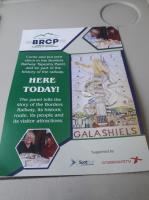
John Yellowlees 23/09/2023
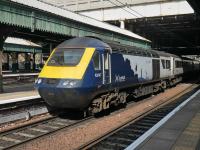
Bill Roberton 21/04/2023
This pair of double track tunnels are to the east of Edinburgh Waverley and a little west of Abbeyhill Junction. Since electrification the tunnels carry single lines as the overhead equipment needed extra clearance.
...

Bill Roberton 13/08/2022

David Panton 01/04/2021
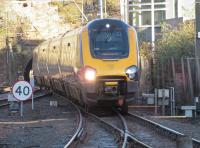
David Panton 12/02/2020
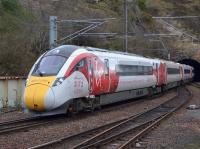
Bill Roberton 30/01/2018
This junction was formed between the 1868 Easter Road Deviation (North British Railway) and the 1846 North British Railway. It was east of Edinburgh Waverley and the Calton Tunnels.
...
See also
Easter Road Deviation (North British Railway)
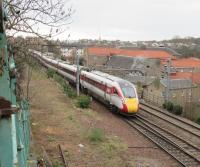
David Panton 01/04/2021

Bill Roberton /07/1986
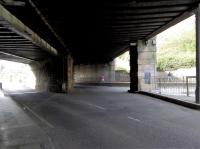
David Panton 14/04/2020
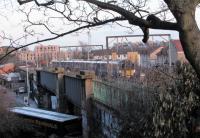
David Panton 17/01/2019
This station was west of the London Road overbridge and St Margarets Shed. There was only one platform, on the south side of the line. The Duke's Walk and Queen's Drive ran west to Holyrood Palace. The station was used by Royal trains and, with the proximity of the depot, for railwaymen.
...
This shed was located east of Edinburgh Waverley just west of Piershill Junction. It was on both sides of the East Coast Main Line. There was a roundhouse and single ended shed to the north and another single ended shed to the south. Approach was from the west, with reversal to the roundhouse. There was a signal box, 'St Margarets', at the west end of the site which opened in 1868.
...
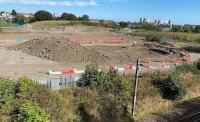
Andy Furnevel 01/09/2022
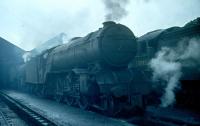
Colin Kirkwood 29/03/1964
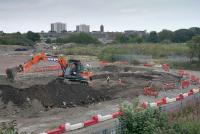
...
Bill Roberton 26/08/2022

Colin Kirkwood 28/09/1964
This is the junction for the disused line to the Powderhall Destructor. Approach was from the east.
...
See also
Easter Road Deviation (North British Railway)
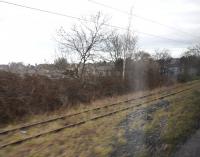
Ewan Crawford 21/02/2023
This a an important depot servicing trains used on the East Coast Main Line.
...
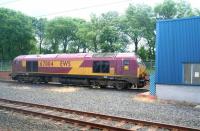
John Furnevel 05/07/2007
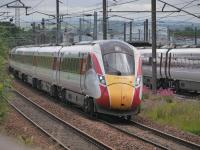
...
Bill Roberton 18/06/2021
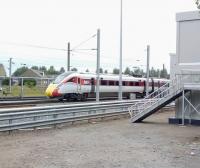
David Panton 18/06/2020
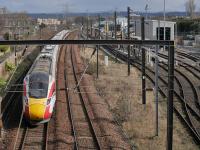
...
Bill Roberton 24/03/2023
This was a double track eleven span viaduct built in timber and iron. The viaduct crossed over both the Figgate Burn and the Leith branch of the Edinburgh and Dalkeith Railway and at its western end was a connecting curve to that line (a west to south curve which also crossed a timber viaduct).
...
This was the junction between the North British Railway main line and its short connecting curve which ran north to meet the Edinburgh and Dalkeith Railway's South Leith branch. The curve allowed trains from the east to join the branch and vice versa. It was opened to the west of Portobello [2nd] station.
...
See also
New Portobello Station (North British Railway)
Lothian Lines (North British Railway)
Portobello Yard (North British Railway)
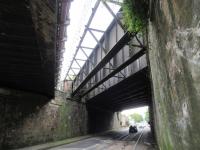
David Panton 19/08/2021
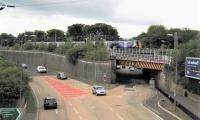
John Furnevel 01/08/2011
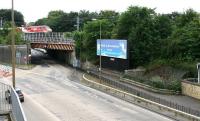
John Furnevel 07/09/2016

John Furnevel 01/08/2011
There have been three station at Portobello and presently (2018) none. The second station, opened by the North British Railway, was a two platform station with a building on each platform. To the immediate east was the original Portobello Junction (later relocated further east).
...

David Panton 17/05/2018
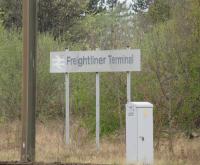
David Panton 24/04/2021
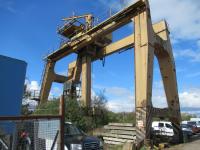
David Panton 29/04/2021
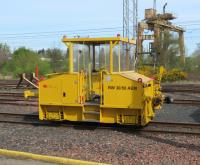
David Panton 23/04/2020
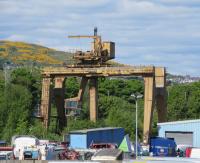
David Panton 14/05/2020
This junction is open. The double track East Coast Main Line from Berwick-Upon-Tweed meets the single track line from Tweedbank and passenger trains run west to Edinburgh Waverley.
...
See also
Edinburgh and Hawick Railway (North British Railway)
New Portobello Station (North British Railway)
Portobello Yard (North British Railway)
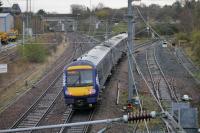
...
Bill Roberton 02/12/2022
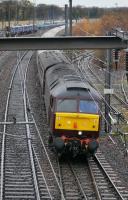
Bill Roberton 02/12/2022
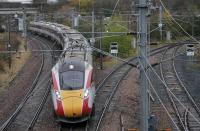
...
Bill Roberton 02/12/2022
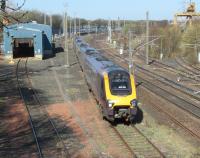
David Panton 15/04/2021
This was a two platform station which replaced Joppa [1st]. But unlike that station, this one was on the East Coast Main Line rather than the Waverley Route.
...

David Panton 08/07/2021
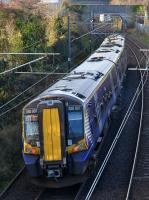
Bill Roberton 08/12/2018
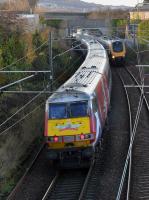
Bill Roberton 08/12/2018
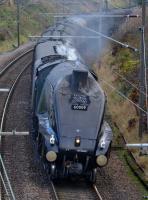
...
Bill Roberton 08/12/2018
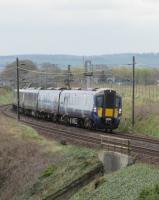
David Panton 24/04/2021
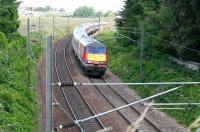
John Furnevel 05/07/2018
This junction was controlled by a tall signal box on the west side of the line and south of Newcraighall Road. The box was tall enough to see over the bridge. Both lines were double track.
...
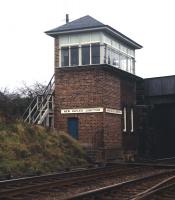
Bill Jamieson 22/11/1970
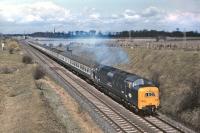
Bill Jamieson 19/04/1970
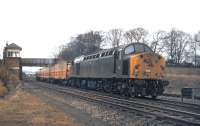
Bill Jamieson 14/04/1970
This junction opened in 1884. Also known as Newhailes East Junction. It was the southern end of a Edinburgh, Suburban and Southside Junction Railway curve connecting north west to the Fisherrow branch of the Edinburgh and Dalkeith Railway.
...
See also
Edinburgh, Suburban and Southside Junction Railway
This is a two platform station. The station is quite some way south of Musselburgh town centre and serves the newer housing and new Queen Margaret University campus.
...
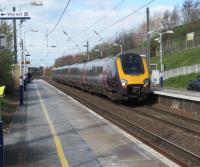
David Panton 23/03/2019
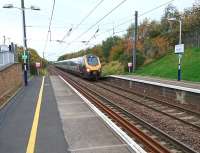
Andy Furnevel 14/10/2017
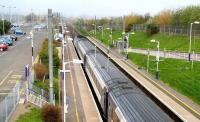
John Furnevel 14/04/2009
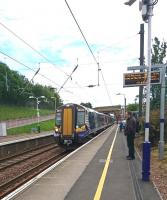
Andy Furnevel 29/07/2017
This junction has had several different layouts and refers to several slightly different locations. The original junction was for the Macmerry Branch (North British Railway) the present version is between the East Coast Main Line (former North British Railway) and line to Millerhill Marshalling Yard (British Railways).
...
See also
Lothian Lines (North British Railway)
Macmerry Branch (North British Railway)
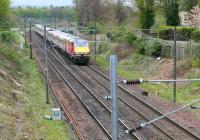
John Furnevel 03/05/2018

Duncan Ross 22/05/2021

John Furnevel 19/07/2018
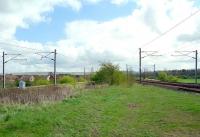
Ewan Crawford //1999
This was a two platform station with the platforms passing under Carberry Road. The main station building was on the eastbound platform with a waiting room on the westbound. The signal box was at the west end of the westbound platform (it closed in 1924).
...
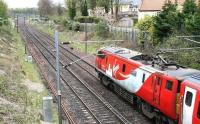
John Furnevel 03/05/2018

Bill Roberton 13/05/2017
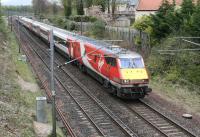
John Furnevel 03/05/2018
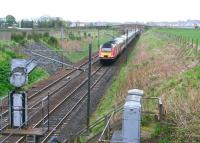
John Furnevel 03/05/2018
This was a short lived station. It was west of today's Wallyford station and north west of today's village.
...
See also
Wallyford Colliery Railway
This is a minimal modern two platform station but with a large car park. The station is east of the original Wallyford [1st] station, which was very short lived.
...

John Furnevel 22/04/2018
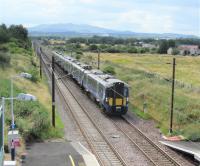
David Panton 18/07/2020
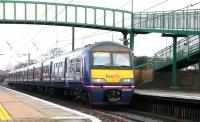
John Furnevel 16/12/2007
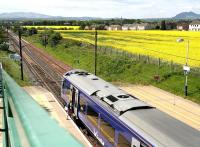
John Furnevel 13/05/2014
This junction was located to the west of Prestonpans station.
...
This is a two platform station on the East Coast Main Line served by local trains. The main station building is on the eastbound platform. The goods yard and shed were on the north side at the east end, the site is now the car park. The signal box (1881) was on the south side of the line at the east end of the westbound platform.
...
See also
Tranent Branch (North British Railway)
Prestonlinks Colliery Branch (North British Railway)

...
Bill Roberton 13/08/2022
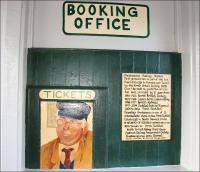
John Furnevel 21/09/2011
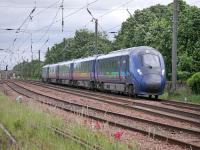
...
Bill Roberton 11/06/2021
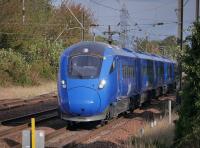
...
Bill Roberton 21/10/2021
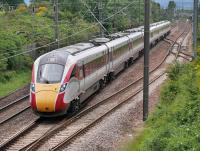
Bill Roberton 11/06/2021
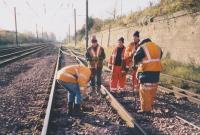
Charlie Niven /11/1998
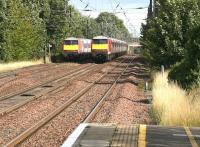
John Furnevel 07/09/2016

Charlie Niven /11/1998
A siding was laid on the south side of the North British Railway immediately west of where the Tranent Waggonway crossed overhead. The siding was approached from the west. A short curved branch was laid from the Tranent Waggonway which turned through 90 degrees from going north to west and ran parallel to the railway siding. Wagons were tipped from above onto railway wagons. With the ...
More detailsSee also
Tranent Waggonway
This bridge was opened in 1846 to allow the North British Railway to pass under the much older Tranent Waggonway.
...
See also
Tranent Waggonway

Bill Roberton //1973
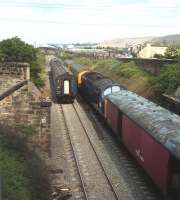
Bruce McCartney /05/1980
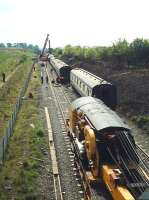
Bruce McCartney //197X
A bunker, on the south side of the line, was served by a siding with a round loop. The bunker served the Blindwells opencast and its extension.
...
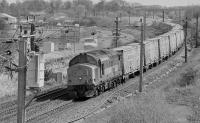
Bill Roberton //2006
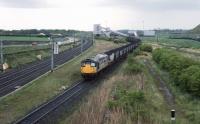
Roger Geach 15/05/1991
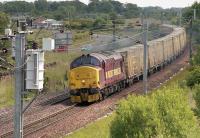
Bill Roberton /06/2006
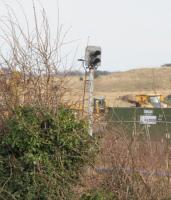
David Panton 21/03/2020
This colliery was on the south side of the North British Railway east of Prestonpans and south of Seton House (as a result of which it was also known as Seton House Colliery). Access was controlled by Riggonhead signal box which opened in 1906.
...
This was a short lived station. It was located to the south of Seton House and Seton Chapel.
...
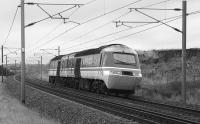
Bill Roberton //1994
This level crossing is west of Longniddry station. The box was on the south side of the line, west of the road. A former railway cottage is opposite on the east side of the road.
...
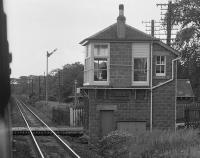
...
Bill Roberton //1974

Bill Roberton 17/05/2011

...
Bill Roberton //1977
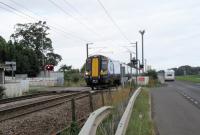
David Panton 10/08/2019
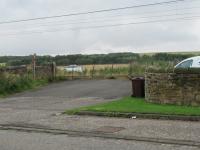
David Panton 10/08/2019
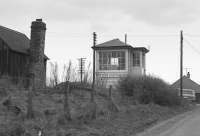
...
Bill Roberton //1978
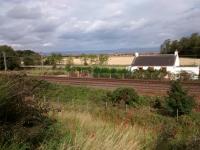
David Panton 16/08/2017
This short siding was on the north side of the line, west of Longniddry station. It was accessed by reversal.
...
This is a two platform station. The station had a third platform for the Haddington branch on the south side.
...
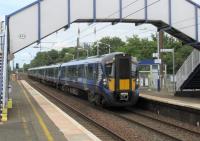
David Panton 25/07/2020
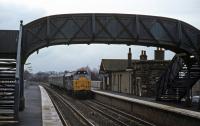
John Clark 10/03/1979
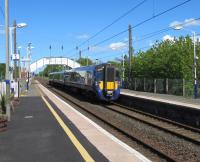
David Panton 11/05/2019
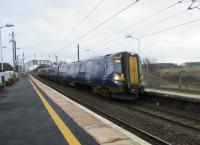
David Panton 25/01/2020
This was an extremely short lived station, most likely located to the north of Ballencrieff House and farm.
...
This is a two platform station served by local trains from Edinburgh Waverley to North Berwick. There is a small car park.
...
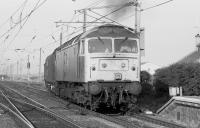
...
Bill Roberton //1990
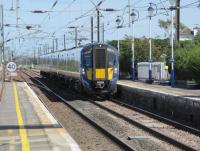
David Panton 18/07/2020
This was a two platform station. The main station building was on the eastbound platform. There were waiting rooms on each platform.
...

David Prescott 29/07/2018
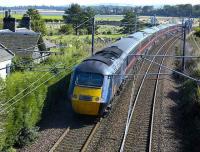
Bill Roberton 19/8/2007
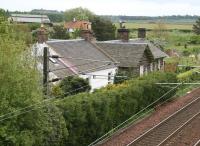
John Furnevel 16/05/2007
This level crossing is between East Fortune (to the west) and East Linton. The crossing was formerly controlled by a signal box which was to the south of the crossing and on the south/west side of the line. This closed in 1965. ...
More details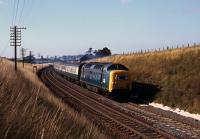
John Clark 18/09/1977
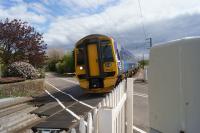
John McIntyre 29/04/2017
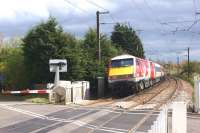
John McIntyre 29/04/2017
The new station in East Linton is west of the original East Linton [1st] station (closed 1964), directly west of East Linton Primary School. There are platform shelters, a footbridge with lifts for accessibility and a car park. The car park is on the south side of the line.
...
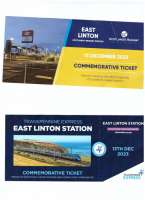
...
John Yellowlees 13/12/2023
This was a two platform station. The proposed new East Linton station will be west of the former station. A station building remains in use as a house, on the south side of the line. The station building is unusual, some parts predate the railway.
...
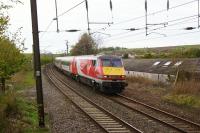
John McIntyre 29/04/2017
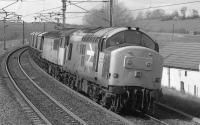
...
Bill Roberton //1992
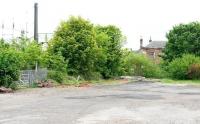
John Furnevel 16/05/2007
This viaduct is directly east of the former East Linton [1st] station.
...
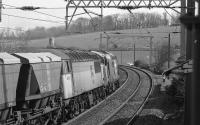
Bill Roberton //1992
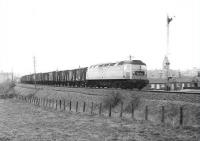
John Furnevel 07/01/1971
This pair of sidings was on the north side of the line, approached from the east. Opposite, on the south side of the line, was Beltonford signal box. The box opened in 1895 and closed in 1966.
...
This is a two platform station. The main platform is on a loop line from the eastbound/southbound track. Network Rail opened a second platform on the main westbound/northbound track in 2019.
...

Malcolm Chattwood 28/09/2020
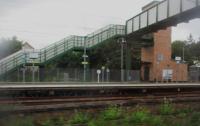
David Bosher 07/06/2023
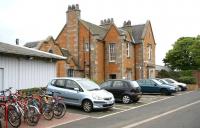
John Furnevel 16/05/2007
These sidings, serving the Dunbar Cement Works, are east of Dunbar station. The site was originally also known as East Barnes. Oxwell Mains was a farm to west.
...
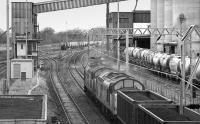
...
Bill Roberton //1993
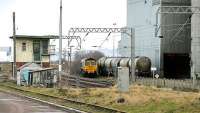
John Furnevel 26/12/2004
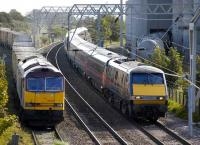
Bill Roberton 19/9/2007
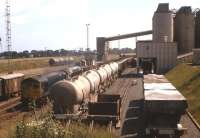
Frank Spaven Collection (Courtesy David Spaven) /07/1971
This was a two platform station. The main building was on the westbound platform. The small goods yard was on the south side of the line, a loop serving a loading bank. Opposite this was a siding on the north side, approached from the east. There was a signal box at the west end of the eastbound platform.
...
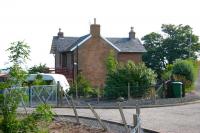
John Furnevel 06/07/2006
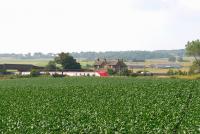
John Furnevel 06/07/2006
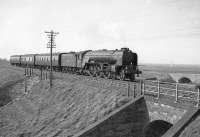
Robin Barbour Collection (Courtesy Bruce McCartney) /04/1964
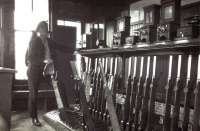
Frank Spaven Collection (Courtesy David Spaven) //1931
This is a double track viaduct by John Miller over the Dunglass Burn, located north west of Cockburnspath. It is a seven arch viaduct. The central arch is 130 ft long and 120 ft over the burn. The north three and south three side arches are 30 ft long.
...
This was a two platform station about a third of a mile north of the village.
...
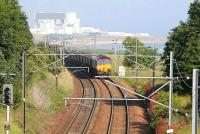
John Furnevel 30/06/2007
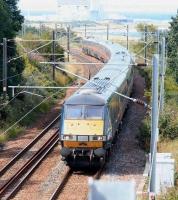
John Furnevel 30/06/2007
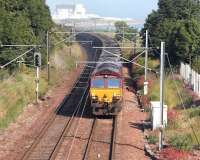
John Furnevel 14/07/2006
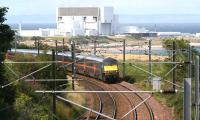
John Furnevel 16/08/2007
Known to the Railway Clearing House as Pease Bridge, later known by British Railways as Pease Siding and the bridge information plaque refers to it as Pease Lye. There were a pair of sidings from the southbound line, on the east side of the railway, approached by reversal. A public siding for agricultural use. The parent station was at Cockburnspath, not far to the north west.
...
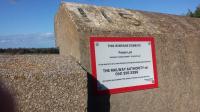
...
Charlie Niven 17/11/2018
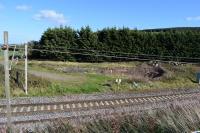
Charlie Niven 30/09/2018
This was a single tunnel, 244m long on the former North British Railway, now the East Coast Main Line.
...
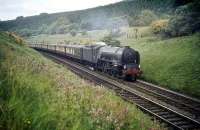
A Snapper (Courtesy Bruce McCartney) //1959
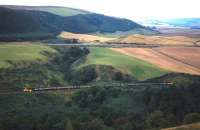
Frank Spaven Collection (Courtesy David Spaven) //1984
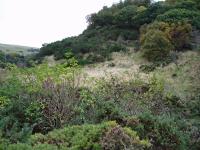
Edward Pearce 18/10/2005

Bruce McCartney Collection //1979
This was a two platform station immediately south of the small village of Grant's House.
...
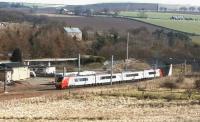
John Furnevel 16/03/2004
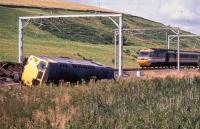
...
John Kirk /08/1988

David Panton 12/09/1960
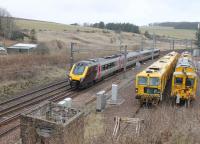
Mark Bartlett 07/04/2018
This is a double track concrete viaduct over the young River Eye. The original stone bridge washed out during severe flooding in 1948 leading to diversions of East Coast Main Line trains over the Berwick - Kelso - Galashiels [1st] - Portobello East Junction route.
...
This is a double track bridge which carries the East Coast Main Line. The original bridge was washed away in the floods of August 1948, leaving a single track spanning the gap where the missing bridge had been. It was replaced in December 1948 with a concrete and steel bridge with five spans. It was one of seven bridges carrying the main line which were washed away during the flooding of the ...
More details
National Library of Scotland 29/12/2020

Charlie Niven /02/1993
This was a three platform station and a junction. (For the new proposed station east of the original see Reston.) Goods and mineral trains from the south could enter the branch to Duns directly, passenger trains ran to a reversing spur south of the station before entering the branch. The awkward working was due to the station opening in 1846 and branch subsequently in 1849. The main ...
More details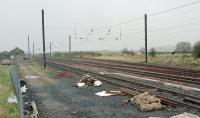
Ewan Crawford //1998
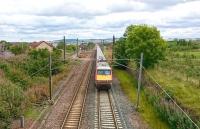
Andy Furnevel 14/08/2018
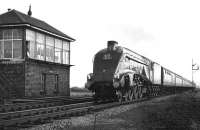
Dougie Squance (Courtesy Bruce McCartney) 04/11/1967
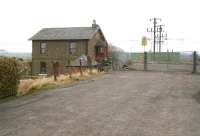
John Furnevel 08/03/2010
A new station is proposed for the village of Reston. The location is east of both the former Reston [1st] station and the former junction (which was east of the station) with the Dunse Branch (North British Railway). The greenfield site is south of the Reston Cattle Market and will be access from The Orchard road. The station will have a car park on its north side (east of The Orchard), ...
More details
Network Rail 23/05/2022
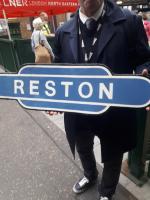
John Yellowlees 23/05/2022
Two bridges at Peelwalls are listed C. Both are west of the former Ayton station.
...
Ayton station was to the south east of Ayton village, about half a mile away.
...
This station served Burnmouth, it was in the north of the village, and was the junction for Eyemouth.
...
See also
Eyemouth Railway
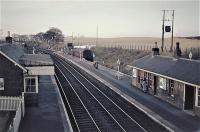
Brian Haslehust 20/01/1962
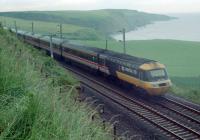
Ewan Crawford //1988
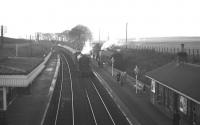
Frank Spaven Collection (Courtesy David Spaven) 27/01/1962
This short inland deviation was opened in 1984. The line was deviated to the west away from the cliffs above Catcairn Bushes and Hilton Bay.
...
This is the East Coast main Line crossing of England/Scotland Border between Burnmouth and Berwick-Upon-Tweed.
...

Duncan Ross 09/06/2018
This signal box was north of Berwick-upon-Tweed and south east of Marshall Meadows House and south of the Marshall Meadows Deviation.
...
This is an island platform station. It is located at the north end of the Royal Border Bridge on the north bank of the Tweed.
...
See also
Newcastle and Berwick Railway
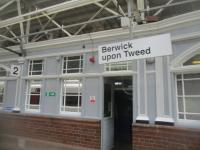
David Bosher 06/06/2023
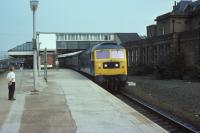
Doug Nicholls 14/08/1976
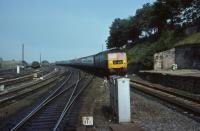
Doug Nicholls 14/08/1976
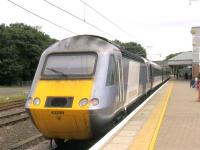
Colin McDonald 10/07/2009
Haddington Branch
This is a two platform station. The station had a third platform for the Haddington branch on the south side.
...

David Panton 25/07/2020

John Clark 10/03/1979

David Panton 11/05/2019

David Panton 25/01/2020
This siding was not far from Longniddry on the Haddington branch. The siding was approached from the south and was on the east side of the line.
...

Ewan Crawford 26/12/2019
This short siding was on the west side of the line and approached from the north. It was 40 chains south of Coatyburn Siding and west of Haddington. The siding served Laverockfarm, to the west, which was connected by a dirt track.
...
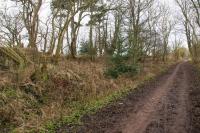
Ewan Crawford 26/12/2019
This was a single platform terminus with the platform on the south side of a loop. The line approached from Longniddry to the west. Opposite the platform, to the north, was the goods yard with shed, covered and uncovered loading banks.
...
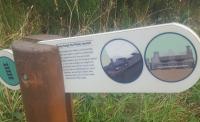
John Yellowlees 22/10/2017
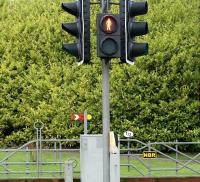
John Furnevel 26/12/2019
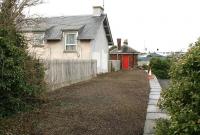
John Furnevel 26/12/2019
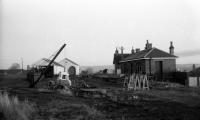
John Clark /12/1969
Portobello West Junction to Baileyfield Signal Box
Opened 1847. (This has an over simplification of the later connection at Portobello.)
This was the junction between the North British Railway main line and its short connecting curve which ran north to meet the Edinburgh and Dalkeith Railway's South Leith branch. The curve allowed trains from the east to join the branch and vice versa. It was opened to the west of Portobello [2nd] station.
...
See also
New Portobello Station (North British Railway)
Lothian Lines (North British Railway)
Portobello Yard (North British Railway)

David Panton 19/08/2021

John Furnevel 01/08/2011

John Furnevel 07/09/2016

John Furnevel 01/08/2011
In 1858 a curve was opened from the 1846 North British Railway to the South Leith branch of the Edinburgh and Dalkeith Railway.
...
See also
Lothian Lines (North British Railway)
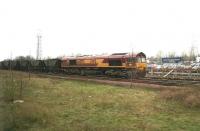
John Furnevel 13/04/2007
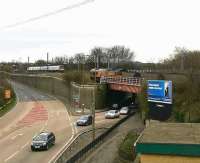
John Furnevel 22/03/2007

David Panton 06/05/2021
This works manufacturers switches and crossings - points, the track hardware for junctions and siding turnouts. Voestalpine VAE UK
...
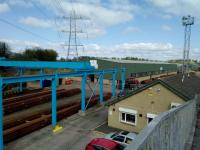
David Panton 30/04/2018
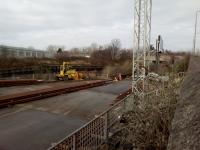
...
David Panton 08/02/2018
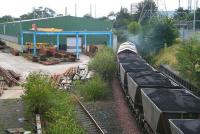
John Furnevel 16/09/2006
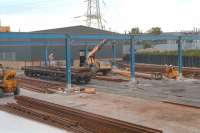
Ewan Crawford 12/06/1989
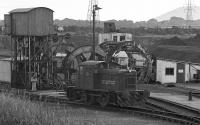
Bill Roberton //1975
Access to Baileyfield Switch and Crossing Works was controlled by Baileyfield Signal Box which opened when the line was doubled in the 1912. The box closed in 1940 when its responsibility was absorbed by Kings Road Signal Box to the north.
...
Books










